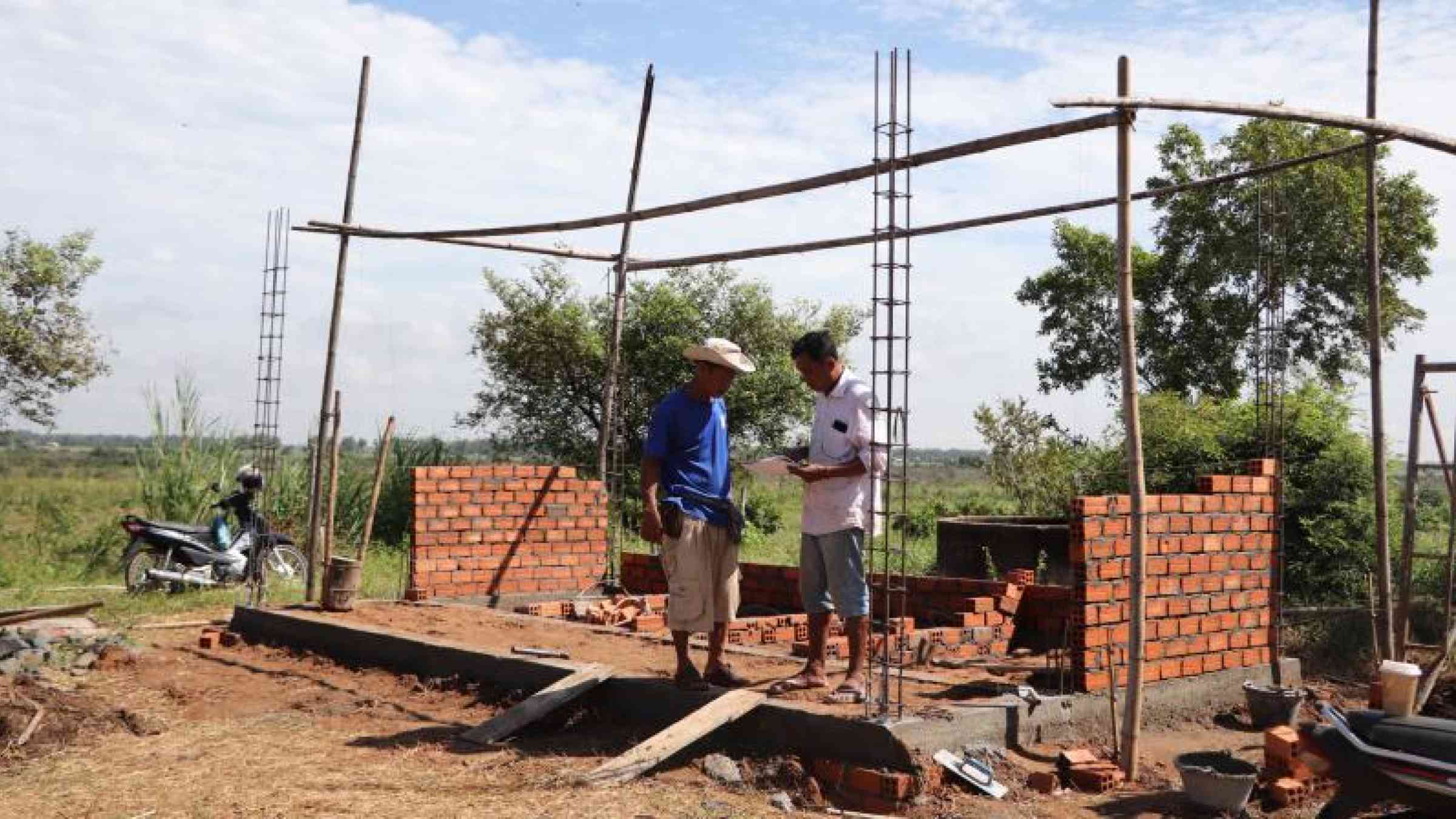
Safe sites play an important part in disaster management efforts and are a part of our disaster preparedness program. They are used to provide safe and secure places for people who lost their usual accommodations as a result of a natural disaster.
By Sotheavuth Choun
In Cambodia, flood is by far the most common type of disaster. Almost all districts including the city are vulnerable to flash flood and high water level during rainy season. Millions of Cambodian are heavily affected by flash flood every year, especially people living in flood-prone areas along the Tonle Sap and Mekong river. “Last year water level rose up to 3 meters, leaving our crops and plants buried deep under the water.” – says Ngoun Vuthy, Village chef of Tuol Dambang. Consequently, those people have no choice but to evacuate to the nearest safe sites that are provided by the government when the flood hit. However, most safe sites are either too small to shelter hundreds of families, or lack in sanitary facilities.
Having recognized the need for improvement, People In Need, with financial support from the United Nations Development Programme (UNDP), has conducted a thorough study of safe sites in various flood-prone areas of the country with the aim to bring infrastructural improvement to the sites. The study discovered 10 safe sites that needed to be improved. However, 4 safe sites, namely Tuol Beng, Tuol Chong Angkrong, Wat Seima Ransy, and Prek Raeng, which are located in Tborng Khmum and Prey Veng province, were identified to be the most used sites and appeared to be in need of improvements given their small size and lack of sanitary facilities and safe drinking water source. Upon extensive discussion with its donor, PIN decided to prioritize these 4 safe sites to ensure long-term sustainability. By valuing quality over quantity improvement, PIN plans to build four latrines with a water reservoir and roof, and a hand pump well to protect the health of local people, improve sanitation and provide safe drinking water source that can be shared by hundreds of families. Additionally, a 127 m2 roof covering will be built to shelter local people from heavy storm and rain and also serve as a shade from the heat by day.
In close cooperation with UNDP, local government and construction suppliers, People in Need Cambodia hope to finish the construction by August this year to ensure that local people in the aforementioned areas will have a safe and secure sites as temporary shelter before the flood hits.
